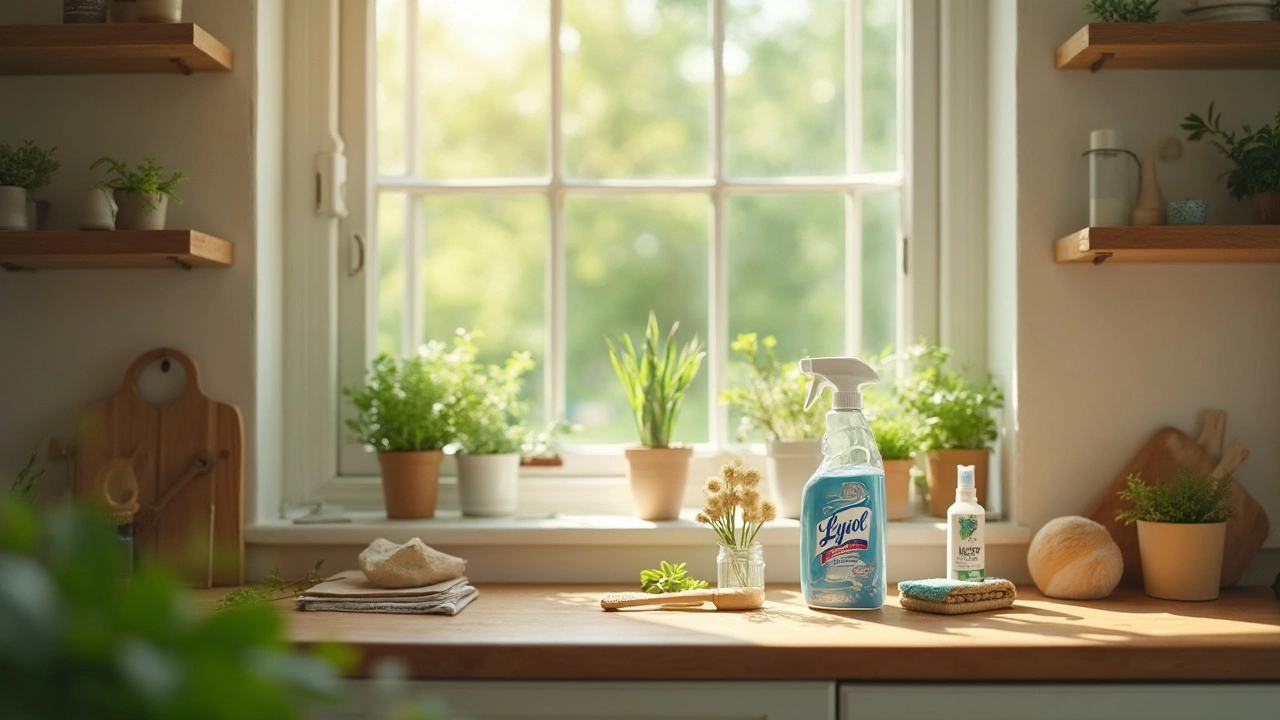How to Use Lysol Right – Simple Tips for a Cleaner Home
If you want a quick way to kill germs, Lysol is a go‑to product for many households. It works on a lot of surfaces, from kitchen counters to bathroom tiles, and leaves a fresh scent. Below you’ll find easy steps to get the most out of it without any hassle.
Where Lysol Works Best
Lysol sprays and wipes are great on hard, non‑porous surfaces. Think of countertops, doorknobs, light switches, and appliance handles. For fabrics, stick to Lysol spray that says it’s safe for upholstery – it won’t ruin your couch. Avoid using it on wood that isn’t sealed or on delicate electronics.
Applying Lysol the Right Way
First, read the label. Some Lysol products need a short wet time to kill bacteria; others work instantly. Spray the surface until it’s wet, then let it sit for the time the bottle recommends – usually about 10 minutes. For wipes, swipe once, wait a minute, then let the area dry. This gives the chemicals enough contact time to do their job.
Don’t forget to ventilate. Open a window or turn on a fan while you work, especially if you’re using a spray in a small room. The scent is pleasant, but breathing in a lot of aerosol isn’t ideal.
Keep Lysol out of reach of kids and pets. Store it in a cabinet or on a high shelf. If someone spills it, wipe it up right away with a damp cloth and wash your hands.
When cleaning high‑traffic spots like doorknobs, aim for a quick daily spray. For deeper cleaning, such as after a flu season, give each surface a thorough wipe and let it stay wet for the full contact time.
If you’re worried about chemicals, you can mix Lysol spray with a little water to lessen the strong scent while still getting disinfecting power. Just make sure you follow the dilution instructions on the label.
Another handy tip: use Lysol on the outside of trash cans. The lid and handle get dirty fast, and a quick spray will keep odors down and germs away.
For the bathroom, spray Lysol on the sink, faucet, and toilet seat. Let it sit, then rinse or wipe clean. This helps prevent the spread of bacteria after each use.
Finally, remember that Lysol is not a substitute for regular cleaning. Sweep or vacuum first to remove dust, then apply Lysol for the disinfecting step. This two‑step approach gives you a truly clean space.
With these simple habits, Lysol becomes a reliable tool in your cleaning routine, keeping surfaces germ‑free without extra effort.

Is Lysol Eco-Friendly? Discover the Truth Behind Your Cleaning Routine
Delve into the world of Lysol and its environmental impact. Explore whether this household staple aligns with eco-friendly cleaning practices. Uncover the ingredients that make it tick and its effects on our planet. Learn practical tips to make your cleaning routine greener without sacrificing effectiveness. Let's find out if Lysol deserves a place in a sustainable lifestyle.
Read More